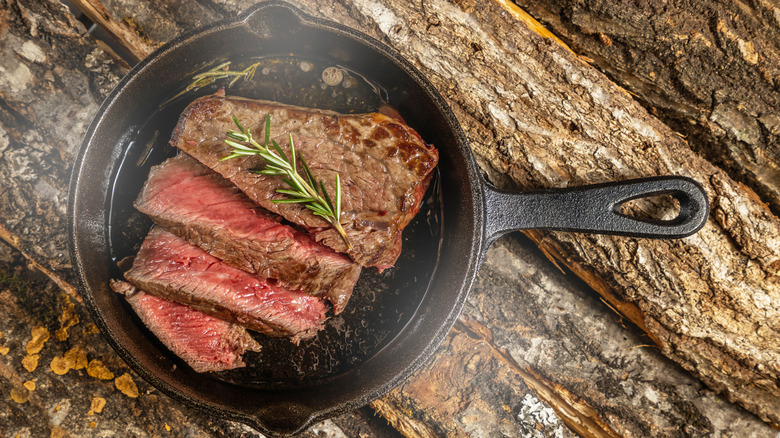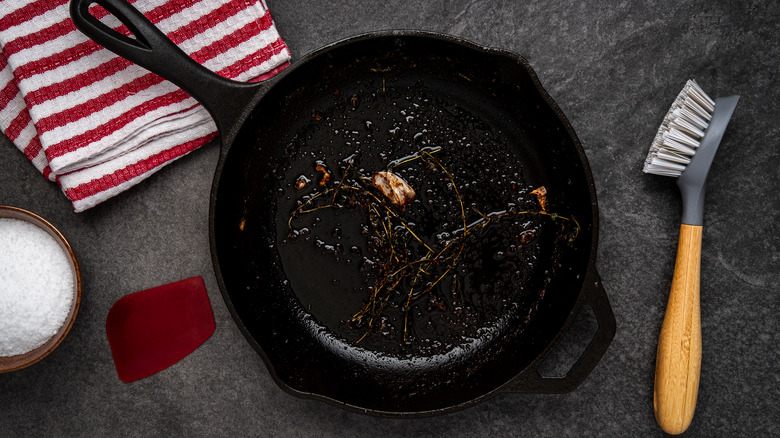What To Do If Your Cast Iron Gets Weirdly Sticky After Seasoning
Cast iron pans and skillets are essential kitchen tools. They're handy and highly versatile. They can go from stovetop to oven and back again without damaging the pan. They're also incredibly durable. Some cooks today are using cast iron pans handed down through family generations, sometimes from a hundred years ago. With each use, your cast iron pan gets better and better and eventually becomes non-stick so that eventually you can cook your eggs in it.
They hold heat exceptionally well, making them ideal for getting the perfect sear on your steak. The drop in pan temperature when searing a steak is mitigated by cast iron's ability to hold on to heat, meaning cast iron loses less heat than your stainless steel pan when searing. Some even swear by baking in their cast iron skillets. Cornbread, Dutch babies, skillet cookies, and pie are all delicious in a skillet (via America's Test Kitchen).
They do require different care and maintenance routines in return for their benefits, which include seasoning the pan after every use and not soaking them in the sink or putting them in the dishwasher. Seasoning your pan ensures it remains rust-free and non-stick while soaking them in the sink will result in a rust-covered pan. Too much of a good thing, though, can sometimes result in a sticky cooking surface (via Lodge Cast Iron).
Your sticky cast iron pan is an easy fix
A sticky cast iron pan occurs because of a build-up of oil on the surface of your pan. This could be because you may have used too much oil or the wrong kind of oil when seasoning your skillet. It might also be because your oven wasn't hot enough for the oil to polymerize, or harden, and form that precious coating, or your pan wasn't in there long enough — don't be afraid to leave the pan in for an hour or more (via Campfires and Cast Iron). It could also be because the pan wasn't clean when you started the seasoning process.
To fix the weird sticky residue on your cast iron pan, you can simply put the pan in the oven upside down on the top rack at 450-500 degrees Fahrenheit for about an hour (via Lodge Cast Iron). You may need to repeat the process to see any change. For super stubborn spots, you may need to scour your pan and re-season it again. This process means using a steel pad or salt to remove the initial layer of seasoning, drying out the pan on the stovetop, and re-oiling and seasoning the pan again. After that, you should be good to go, but keep an eye out for those sticky spots so they don't become more difficult to get rid of.

